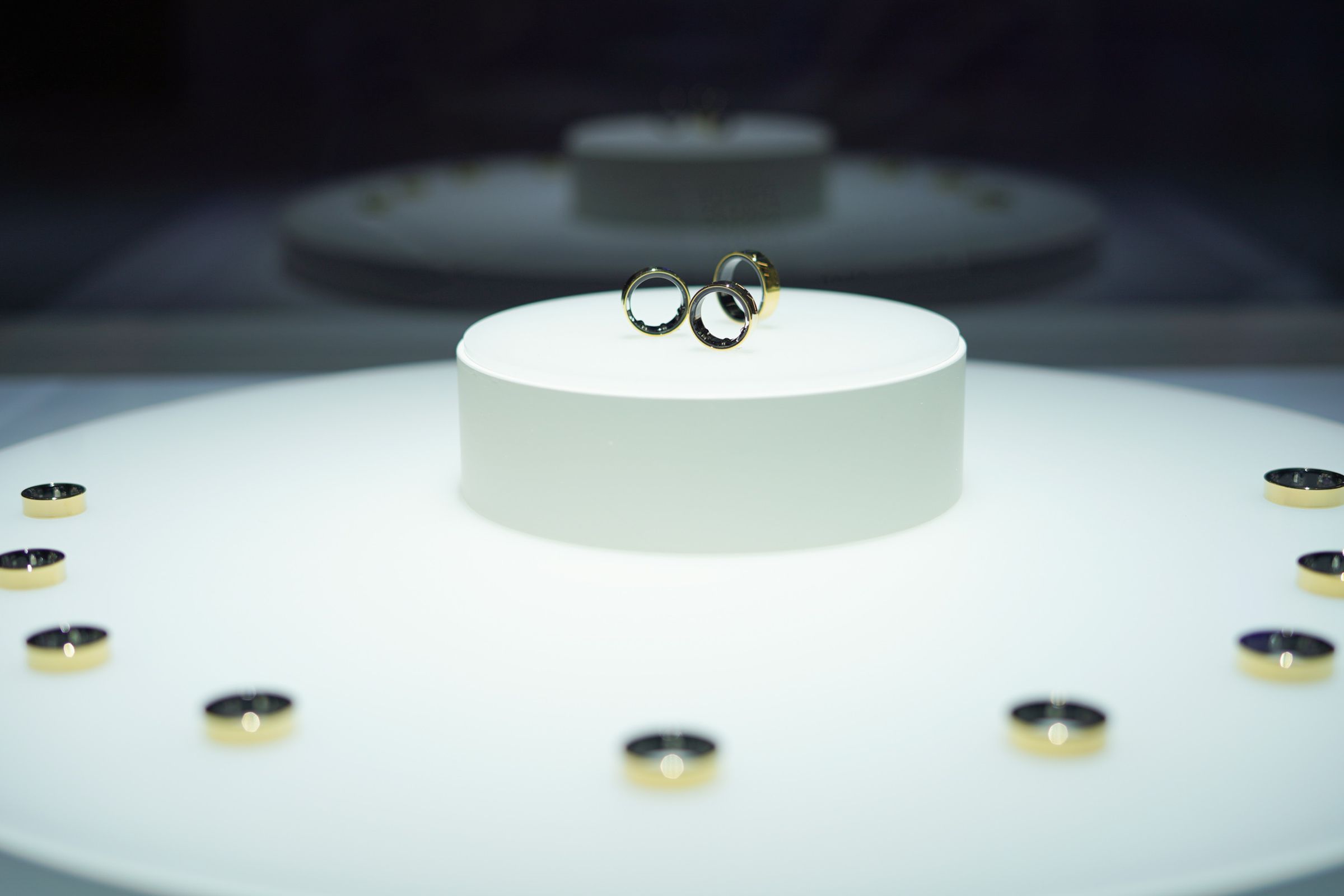At Galaxy Unpacked last month, Samsung teased a brand-new wearable in a new product category with not much more than a splashy video and a name: Galaxy Ring. Now, we have a little more to go on, including the fact that it’s expected to arrive this year.
I got some hands-on time with a prototype ring ahead of Mobile World Congress — it’s very light and comes in three colors, though Samsung emphasizes that the final product is subject to change. But I also got a sense of Samsung’s bigger goals for this new product line, which it sees as not just another wearable but part of the company’s vision for a future of ambient sensing (more on that in a minute).
The Galaxy Ring prototypes I was able to try out were presented in three colors: platinum silver, ceramic black, and gold. I wasn’t allowed to take any photos during that session, but gold looked right at home next to my wedding ring. The Galaxy Ring is lighter than it looks and doesn’t feel as dense as I thought it would. It has a slightly concave shape, and each color was offered in sizes from 5 to 13, which is a slightly wider range of options than usual, with sizes marked as S through XL on the inside of the band.
Samsung’s VP of digital health, Dr. Hon Pak, didn’t specifically say what sensors are in the ring but mentioned sleep insights based on heart rate, movement, and respiratory indicators. Pak says that Samsung’s partnership with Natural Cycles (which already brings period and fertility tracking to its Galaxy Watch series) will extend to the ring, too — putting it in direct competition with the Oura Ring. On the Galaxy Ring, battery size increases slightly in the larger band sizes, though Pak couldn’t share any exact battery life estimates.
The Galaxy Ring will help inform a new metric Samsung is introducing to the Health app in the near future called My Vitality Score. It’s based on a model from the University of Georgia that incorporates four factors: sleep, activity, resting heart rate, and heart rate variability.
The Vitality Score will be a feature of Samsung’s Galaxy Watches, too, coming first to the Watch 6 later this year — but will require a Galaxy S24-series phone to work. Ring owners will also be able to specify certain health goals and receive related updates and tips in the form of something called Booster Cards, which are also coming to the Galaxy Health app later this year.
Throughout a session detailing Samsung’s vision for its new wearable, Pak referred to it as a step forward in building out a larger ecosystem of ambient sensing — providing “connected care centered around the home.” Rather than relying on a single device you have to wear comfortably and remember to charge, the notion behind ambient sensing is gathering data from multiple places to remove friction. Your ring, your watch, who knows, your refrigerator — all working in harmony to remind you the last time you ate a vegetable was four days ago and maybe that’s why you feel disgusting.
Pak describes it a little more eloquently than that but envisions a holistic system that supports individual health goals rather than a single gadget bombarding users with contextless data. It sounds entirely reasonable — lovely, even. But first? Samsung needs to get this ring right.

Leave a Reply